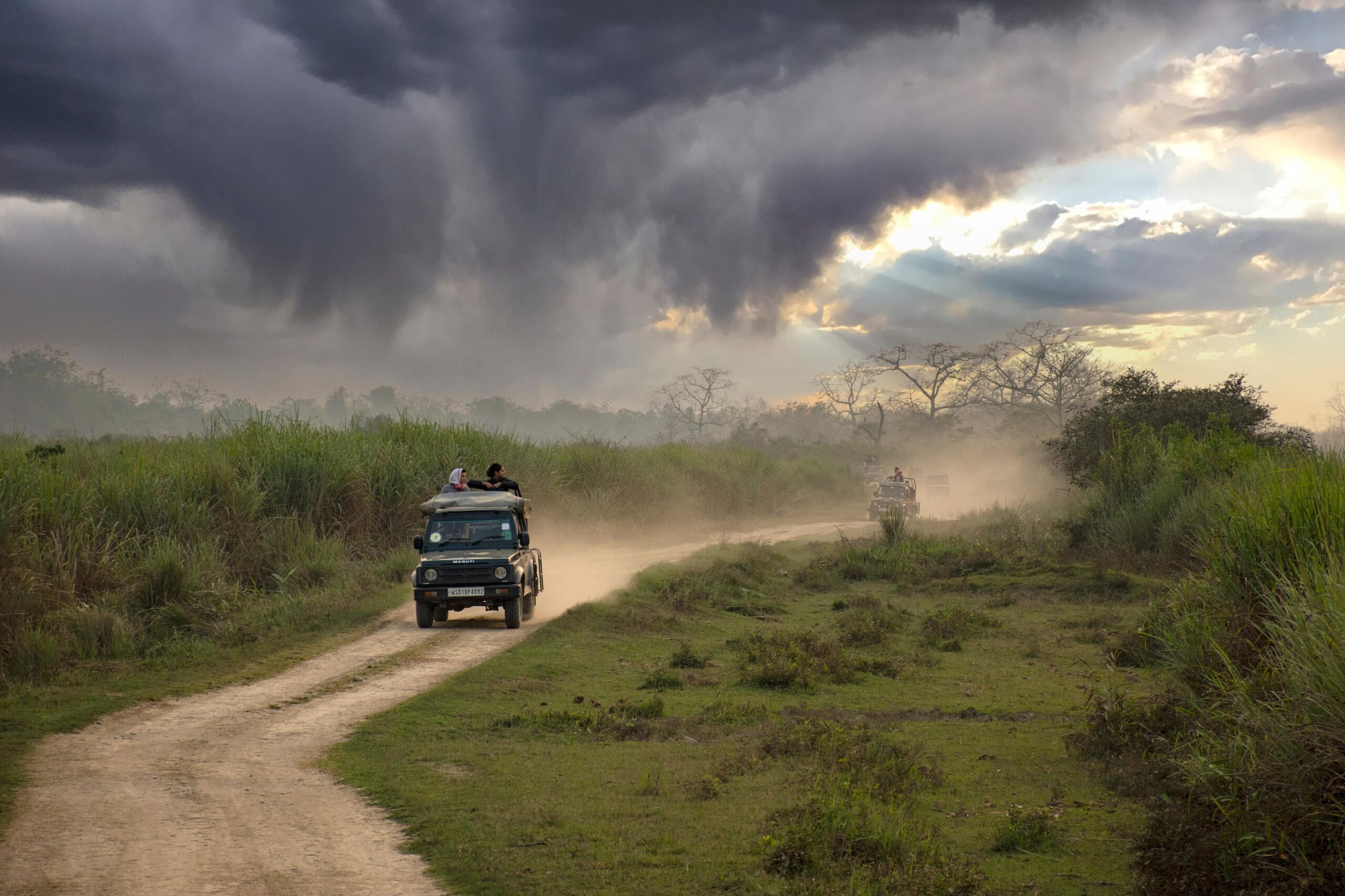
India’s Big Five: The Ultimate Wildlife Safari Checklist
There is something special about seeing an animal roaming in the wild without fences or confinements, just the moment of recognition. In India, these five species have earned a legendary reputation among travelers, naturalists and wildlife photographers. They are not only beautiful to watch but also carry the weight of past stories, habitats and decades of conservation efforts. Here we’ll not only talk about ticking the boxes but also know where to look for them and understand what makes each species unique, choosing wildlife safaris that go way beyond just sightseeing. These are India’s Big Five: the Bengal Tiger, Asiatic Lion, Indian Elephant, Indian Rhinoceros and Indian Leopard, and here is a brief on where and how you can experience them at their best.
Bengal Tiger
This isn’t rare in terms of icon status; it’s everywhere in art, mythology and travel brochures. But seeing them during a wildlife safari, that’s different. There’s a kind of stillness that comes over a forest when a tiger is nearby. Guides go quiet, even the birds tend to pause, then maybe just the striped shape cuts through the bush. It’s not a guaranteed moment, but if it happens, it becomes a lifetime experience.
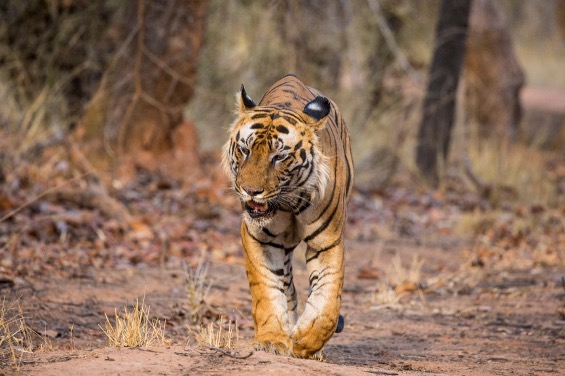
Best Places to Spot:
- Bandhavgarh National Park – One of the highest tiger densities. Sightings are frequent, especially in Tala Zone.
- Ranthambore National Park – Open terrain helps. Tigers are more used to vehicles, and they don’t mind hanging around.
- Kanha and Tadoba – Less crowded than Bandhavgarh, but equally good in terms of tiger activity. Kanha is also visually stunning.
Behaviour, Habitat, and Conservation Notes Tigers are solitary, territorial, and love to cover. You’ll find them near water or moving through thick sal forests. They tend to hunt early morning or late evening. And yes, they can disappear into thin air, so don’t blink too long. India is home to more than 70% of the world’s wild tigers. Project Tiger started in 1973, and while the numbers have seen ups and downs, today’s protected zones have helped stabilize many core populations.
Asiatic Lion
There is just one place where you can see them and that is the Gir National Park. Smaller than their African cousins and a bit less flashy in the mane department, but these lions are still magical in their own way. And the fact that there’s just one wild population left makes them all the more special.
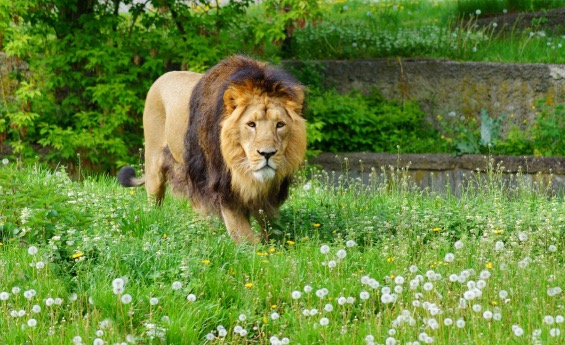
Best Place to Spot:
- Gir National Park — The only home of the Asiatic lion. Morning safaris offer the best chance and the guides here know the prides by heart.
Behaviour, Habitat and Conservation Notes: Asiatic lions live in small pride groups, often with fewer individuals than African lions. They prefer open scrubland and dry forest. You might find one resting under a bush or walking along the dusty safari path. The area isn’t as densely forested, so sightings are often clear. Once near extinction, their numbers have slowly increased due to protected breeding and strict boundaries around Gir. Still, having all of them in one park remains a concern, so discussions about relocating a second population have been ongoing for years.
Indian Elephant
Unlike a tiger or a lion, an elephant doesn’t need any drama to impress. You can just hear them long before you see them cracking branches, trumpeting in the distance, or just that slow rustle through bamboo groves. Watching a herd move, especially when it includes calves, is both grounding and gentle. You’re not the center of attention here. They are.
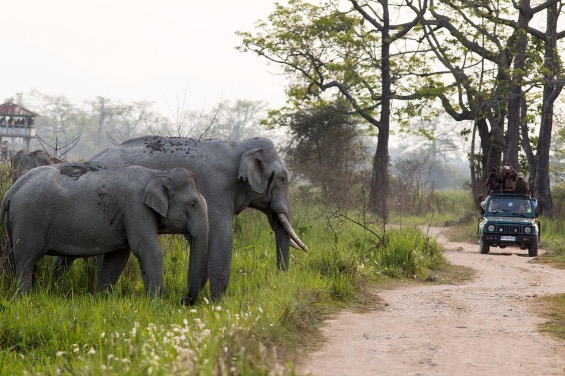
Best Places to Spot:
- Jim Corbett National Park – Especially in summer, elephants often gather in large numbers in the Dhikala zone.
Behaviour, Habitat and Conservation Notes: Elephants live in female-led groups. They migrate over large distances depending on water and food. The matriarch remembers where to go, where the water holes are and which paths are safe. Males usually roam alone or in bachelor groups. Human-elephant conflict is a major issue with agriculture and infrastructure, often cutting across migration routes. Corridors have become a key focus, helping herds move safely between habitats without running into fences, roads or towns.
Indian Rhinoceros
The one-horned rhino is something else. Big, prehistoric-looking and covered in what looks like Armor plating and yet surprisingly graceful when it moves. You usually spot them from a distance, grazing quietly or wallowing in muddy water under the sun.
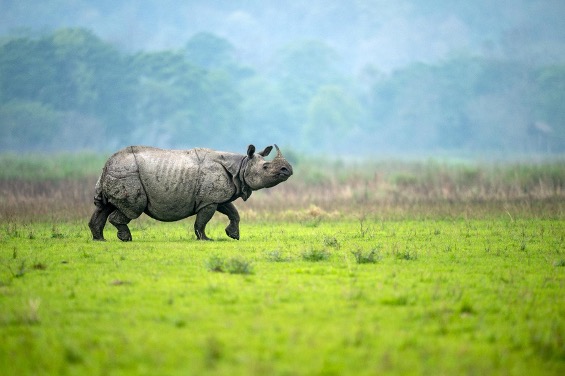
Best Place to Spot:
- Kaziranga National Park – Over two-thirds of the world’s population is here. It’s the go-to place for rhino sightings, with the highest success rate.
Behaviour, Habitat, and Conservation Notes: Rhinos love grasslands and floodplains. They’re not aggressive unless provoked, but they do keep a close watch. Mornings are good for viewing, as they’re active early and prefer to cool off by midday. Poaching has been a huge threat, mostly due to the demand for their horn. But strict protection and monitoring in Kaziranga have helped the numbers grow steadily. Anti-poaching patrols, community engagement and habitat management have made a visible difference.
Indian Leopard
The leopards are the trickiest ones; they don’t like attention at all. They’re silent and elusive and spend more time up trees than on roads. But if you do get a sighting, it stays with you. There’s something eerie about how calmly they stare before disappearing without a sound.
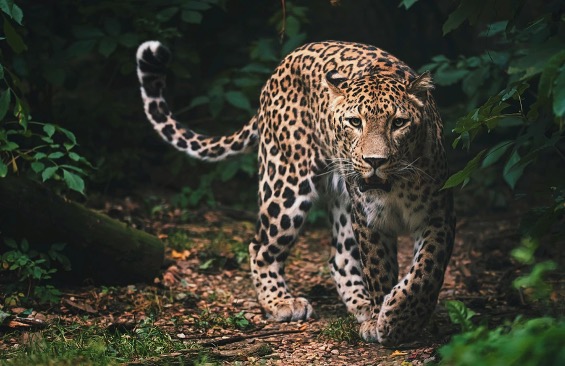
Best Places to Spot:
- Bandhavgarh & Ranthambore – Good leopard activity in some zones, especially near rocky or forested areas.
Behaviour, Habitat, and Conservation Notes: Leopards adapt well. They’ll live in dense jungle, open rocky terrain and even near human settlements. They usually hunt at night, drag kills into trees and avoid conflict with larger predators by staying low-profile. Leopards often clash with humans due to the shrinking of their habitat space. They’re resilient but not invincible. Protection is often informal, relying on how local communities view their presence. Some regions have started using camera traps and village-led monitoring to reduce conflict.
Final Note
If your goal is to see all five, plan for more than just one wildlife safari. Each animal inhabits a distinct type of forest, under varying conditions and offers a unique experience. Don’t try to rush it. Take time with each park. Let the drives be slow. Go early, stay late and trust your guide. You might always spot what you came for if you have patience.
A wildlife safari with Into the Wild isn’t always a guarantee. It’s a chance. And when it pays off, it’s never what you expected but always what you’ll remember and make it a lifelong memory.

